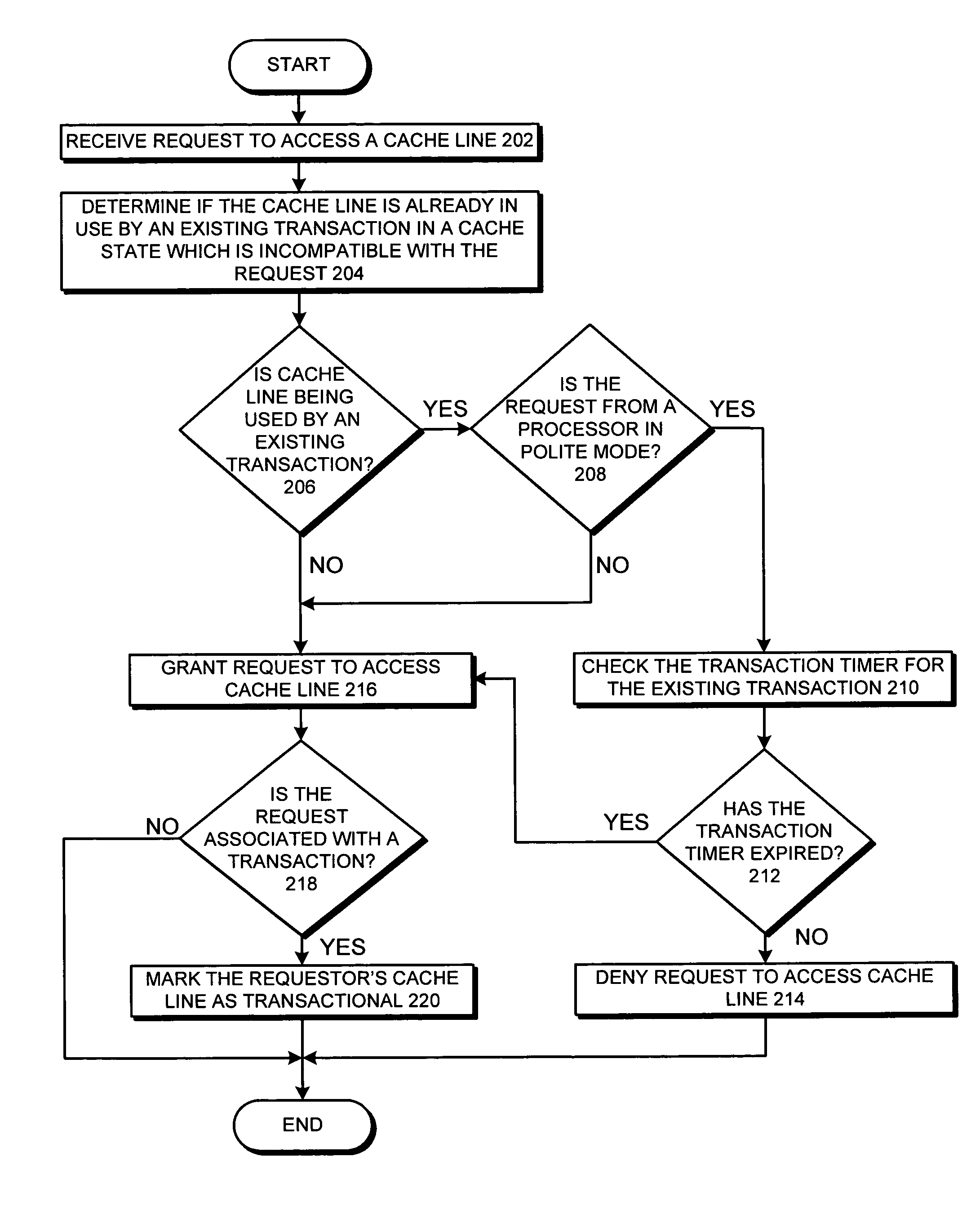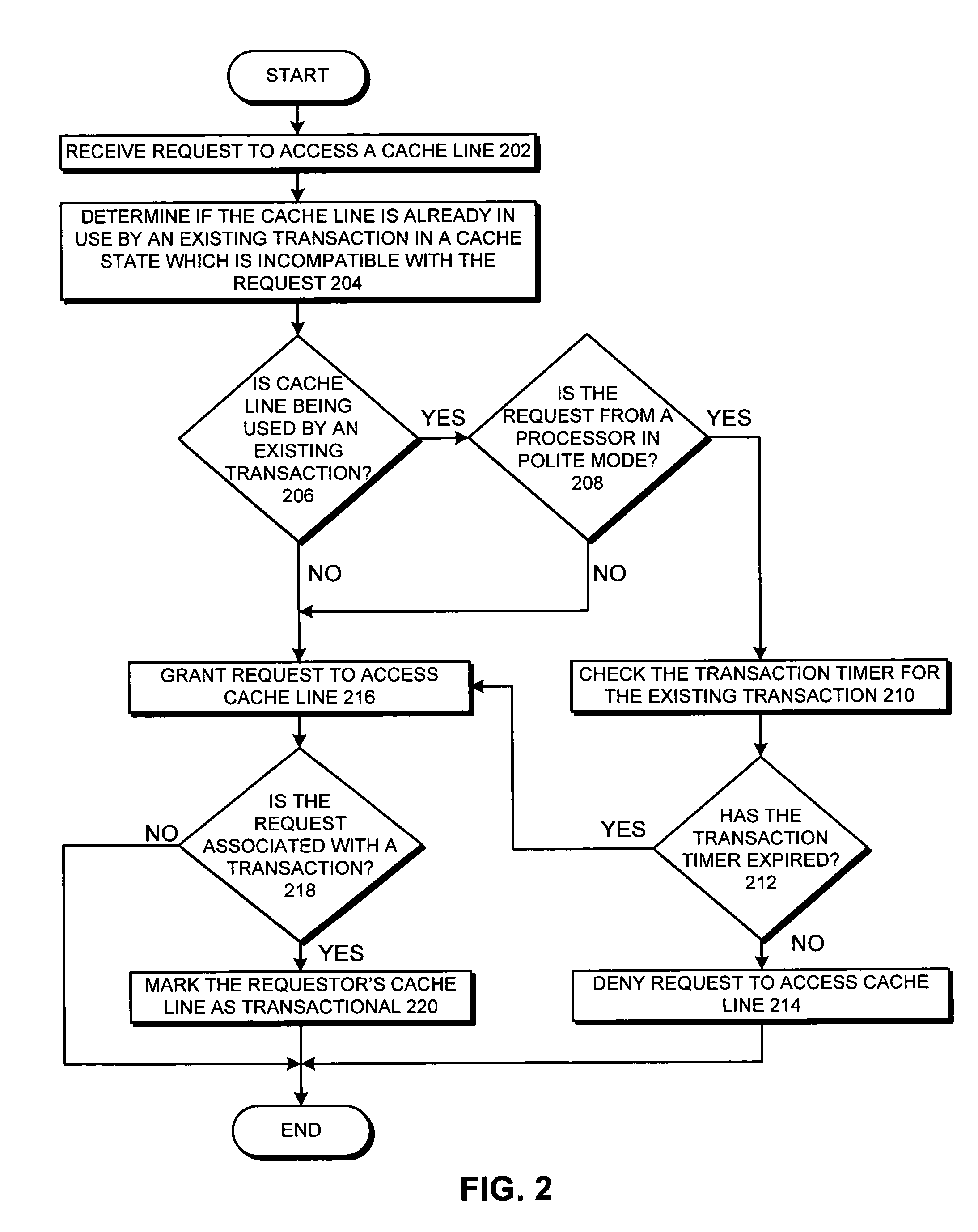Controlling contention via transactional timers among conflicting transactions issued by processors operating in insistent or polite mode
a technology of transactional memory and timer, which is applied in the direction of program control, multi-programming arrangements, instruments, etc., can solve the problems of reducing the performance gains of concurrent software, unable to distinguish the interactions of concurrent threads, and using locks, which are well known problems in software engineering and performan
- Summary
- Abstract
- Description
- Claims
- Application Information
AI Technical Summary
Problems solved by technology
Method used
Image
Examples
Embodiment Construction
[0032]The following description is presented to enable any person skilled in the art to make and use the invention, and is provided in the context of a particular application and its requirements. Various modifications to the disclosed embodiments will be readily apparent to those skilled in the art, and the general principles defined herein may be applied to other embodiments and applications without departing from the spirit and scope of the present invention. Thus, the present invention is not limited to the embodiments shown, but is to be accorded the widest scope consistent with the principles and features disclosed herein.
[0033]The following disclosure presents an approach for implementing transactional memory that allows simple contention control mechanisms to be built into hardware to deal with common cases fast, but also provides flexible means for software to take over and manage contention when the simple built-in hardware mechanisms (if any) are not s...
PUM
 Login to View More
Login to View More Abstract
Description
Claims
Application Information
 Login to View More
Login to View More - R&D
- Intellectual Property
- Life Sciences
- Materials
- Tech Scout
- Unparalleled Data Quality
- Higher Quality Content
- 60% Fewer Hallucinations
Browse by: Latest US Patents, China's latest patents, Technical Efficacy Thesaurus, Application Domain, Technology Topic, Popular Technical Reports.
© 2025 PatSnap. All rights reserved.Legal|Privacy policy|Modern Slavery Act Transparency Statement|Sitemap|About US| Contact US: help@patsnap.com



